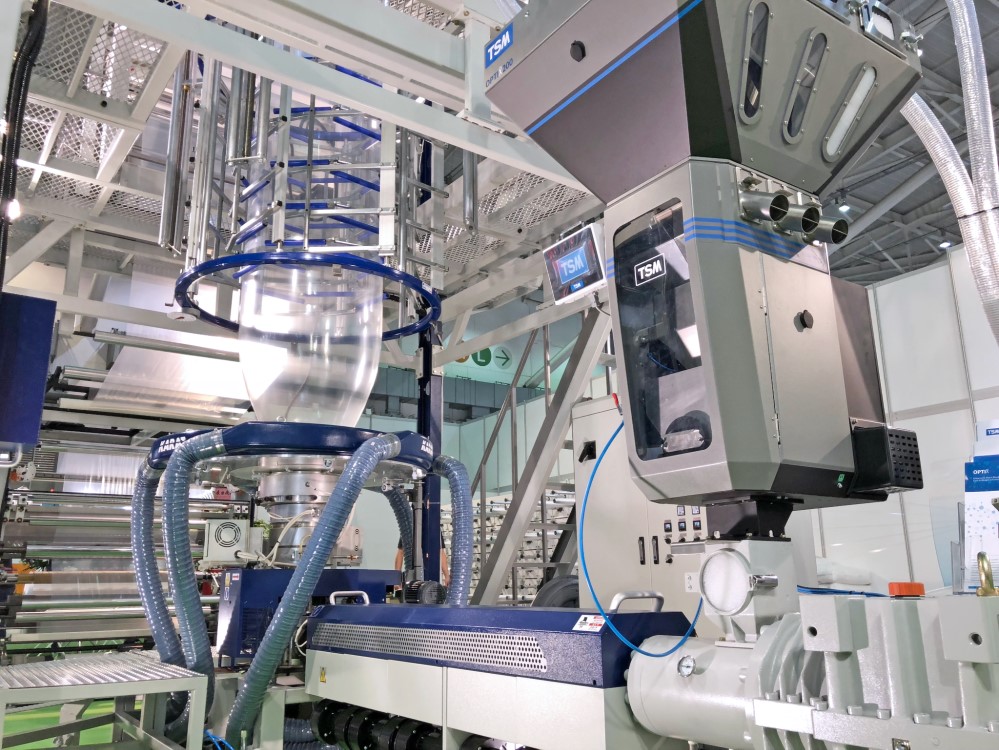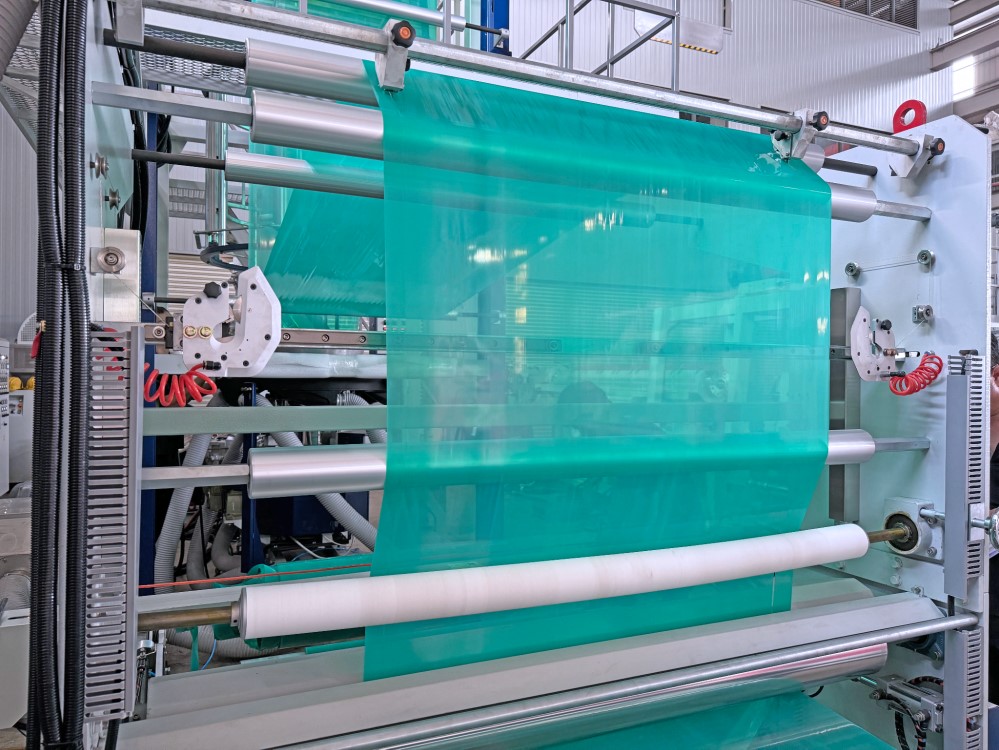Troubleshooting for Blown Film Extrusion Line: General Problems of Extruder and Film
Blown film extrusion lines are highly versatile, serving a range of applications including packaging, plastic bags, and agricultural films. This article offers troubleshooting guidance for addressing common issues encountered during the blown film extrusion process. It covers key areas related to extruder performance and film quality. Our aim is to help you diagnose problems effectively and implement solutions to optimize your extrusion process.
Extruder Problems
1.Motor Overload
| Cause Reasons | Solutions |
|---|---|
| If the motor is overloaded, there could be issues with the water supply being too much or little. The motor may also be drawing more power than it can handle, leading to possible damage. Additionally, the exhaust line might be blocked or improperly connected, causing poor ventilation. |
-Adjust the water supply to achieve maximum vacuum with the minimal amount of water. - Verify the motor’s power rating limitations on the data tag. - Ensure the water supply is adjusted to reach maximum vacuum with the minimal amount of water. - Clear any clogs from the line or connect it to an open vent. |
2.Heat Zone not Reach the Set Point
| Cause Reasons | Solutions |
|---|---|
| The system may be facing several issues affecting temperature control. The heater band could be burned out, the pyrometer may not activate at the correct temperature, and the mercury contactor might not be energized or faulty. There could also be problems with the overload protection circuit, or the thermocouple might be improperly seated or misassigned. Additionally, the cooling solenoid could be stuck open. These factors collectively impact the system's temperature regulation and overall efficiency. |
- Replace the heater band, pyrometer, mercury contactor, or control solenoid. - Energize the circuit breaker for the appropriate zone. - Re-seat the thermocouple properly in the well. - Reassign the thermocouple or heater band to the correct zone. |
3.Higher Pressure & Reduced Extrusion Rate
| Cause Reasons | Solutions |
|---|---|
|
If the pressure is too high and the extrusion rate is slowing down, it’s likely because the screen filter is clogged. |
- Change filtering elements |

Film Problems
1.Uneven Thickness
| Cause Reasons | Solutions |
|---|---|
| Uneven thickness in the extrusion process can be caused by several factors. Variations in extrusion or die gap, along with inconsistent die temperature, can lead to thickness discrepancies. Additionally, the presence of burned material or dirt inside the die, a broken screen filter, or uneven air blowing pressure can contribute to these inconsistencies. External factors, such as excessive wind in the factory, and mechanical issues like a loose motor drive belt, may also affect the uniformity of the extrusion. Identifying and addressing these issues is crucial for achieving consistent thickness in the final product. |
- Re-adjust die gap - Remove and clean die a. Adjust air ring air outlet b. Check air ring level c. Air ring not good, replace. - Check and modify die temperature profile - Change screen filter - Improve factory environment condition - Replace driving belt |
2.Pin Hole or Fish-Eye
| Cause Reasons | Solutions |
|---|---|
| The pinhole or fish-eye issues in a blown film machine can arise from several potential causes. These defects may be due to particles mixed in the material or excessive shaping temperature, which can cause solvents to remain inside the die and cylinder. A broken screen filter could also contribute to the problem. Additionally, if the heater zone temperature is too low, the material may not melt and mix thoroughly, or the extruder might not achieve adequate mixing. Addressing these issues is essential for improving film quality and preventing such defects. |
- Prevent particles from the hopper with the material. - Lower the shaping temperature and clean the die, screw, and cylinder. - Replace the screen filter. - Increase the heater temperature. - Use a denser screen filter or opt for a screw with a higher ratio. |
3. Loose and Wrinkle
| Cause Reasons | Solutions |
|---|---|
| The loose and wrinkled issues in a blown film machine can stem from various causes. These problems may arise from excessive and uneven thickness, improper stabilizer settings causing too much friction, or incorrect stabilizer operation. Additionally, uneven pressure from the rollers or an incorrect height of the take-off roller can contribute to defects. Unstable bubbles may result from incorrect air cooling conditions, while too high shaping temperatures or a high B.U.R. (Blow-Up Ratio) can exacerbate the issue. Misalignment of the die, stabilizer, and take-off roller, as well as room wind direction affecting bubble stability or causing leaning, also play a significant role in these problems. |
- Repair the stabilizer to reduce friction. - Adjust the stabilizer gap. - Ensure even pressure distribution. - Calibrate the height of the take-off roller. - Regulate air blowing pressure and direction. - Lower the shaping temperature. - Update to a new die diameter, selecting one appropriate for the film’s blow-up ratio based on the material used. - Realign the center point. - Prevent wind from affecting the area. |
4.Width Fluctuating
| Cause Reasons | Solutions |
|---|---|
| There are several causing factors in width fluctuating in blown film process. These include uneven or excessive extrusion rates, excessively high shaping temperatures, overly strong air blower pressure, improper roller adjustments, unbalanced roll or line speeds, and an inadequately balanced stabilizer system. Addressing these issues involves adjusting each factor to ensure consistent film quality. |
- Decrease shaping temperature. - Reduce air blower pressure. - Calibrate pressure at both ends of the roller. - Optimize line speed. - Adjust bubble stabilizer system |

In summary, optimizing your blown film extrusion process requires careful attention to both machine settings and external factors. By troubleshooting common issues like motor overload, uneven film thickness, or pinholes, you can minimize downtime and improve film quality. If you're exploring more compact options for smaller production needs, our blog on Mini-Type Blown Film Extrusion Machines offers valuable insights. Additionally, if you’re handling multi-layer applications, you may find our guide on 3 Layer Blown Film Extrusion Machine helpful. For those looking to enhance production efficiency with advanced setups, don’t miss our article on the ABA Blown Film Extrusion process, or explore Different Types of Blown Film Extrusion Machines for Plastic Bags to choose the right system for your specific needs. Regular maintenance and proper calibration are key to ensuring the efficiency and longevity of your extrusion lines. If you need further assistance or professional troubleshooting, don’t hesitate to contact us.


Taibao City, Chiayi County 61251, Taiwan
Phone: +886 5 2376175
E-Mail: [email protected]

























